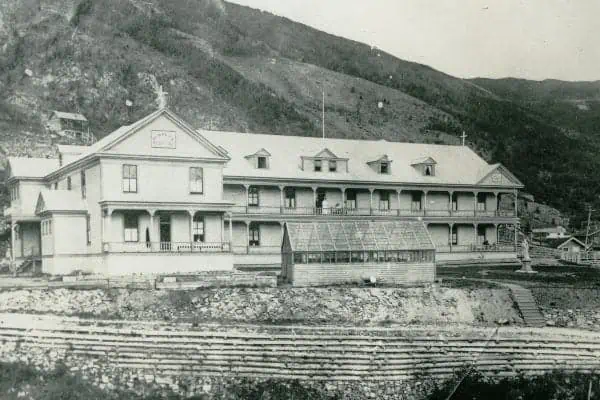Dredge No. 4 was built in 1912 and operated until 1959. It was designated as a national historic site in 1997
Carol Kung is measuring the cross-section of a deck beam on a 108-year old mining dredge. Dredge No. 4 is a giant gold-seeking machine. It measures two-thirds the size of a football field, eight storeys high and weighs more than 1,000 tons. This wooden behemoth gobbled up riverbeds in Yukon’s goldfields between 1912 and 1959. The vessel now rests as a national historic site near Dawson City, hosting thousands of visitors on guided tours every summer.
As a structural conservation engineer with Parks Canada, Kung works with site teams to keep historic resources like Dredge No. 4 in good condition. On this winter day outside Dawson City, the temperature is a biting -18 degrees C, but Kung doesn’t feel the icy gnaw of the arctic breeze. She is 4,340 kilometres away, snug within her home office in Ottawa, using Finite Element (FE) technology to build a 3D model to help conserve this historic structure.
“The idea is to understand how the structure is behaving as a whole right now,” Kung says. “Through analyzing the outputs, we can identify the areas that may need intervention.”
FE modelling is a digital process that lets engineers visualize and understand how a structure is responding to existing or applied forces. The structure is drawn within a software, piece by piece, and each small element is given properties including material type, strength and load. Running the model can reveal areas of structural concern. Kung is at the early stages of building the model of Dredge No. 4.
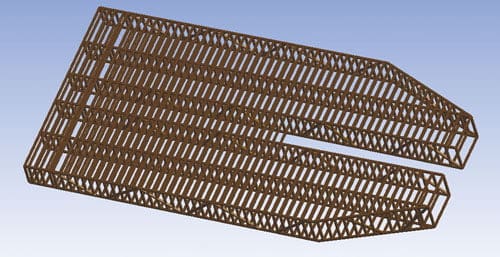
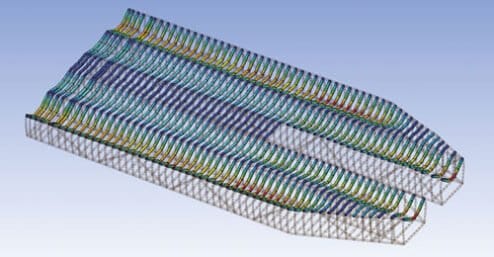
“The primary step is building the geometry and making sure that it’s as representative as it can be,” says Kung. “I’m looking at the beams and the columns. The floor system, the wall system. It’s interesting, because it’s a boat. So it’s got a different type of geometry than what a building would have.”
Even without COVID-19 travel restrictions, getting engineering specialists like Kung to this far corner of the country for extended periods is a challenge. Since Kung can’t measure the dredge in person, she pores over 470 historic drawings and laser scan data to aid her model building.
“I can go into a drawing and size up a beam to know the cross-section. And I can put that into the model. Any measurements I would take on site to get the geometry is exactly what I would have to do now through the historic drawings and laser scan data.”
When the model is run, contours are generated showing areas from lower to higher stress. “The model outputs the response of the building. And it’s for us to look at the information … and to analyze and interpret that information into useful information for us,” Kung says.
Dredge No. 4 was designed to float on ponds and systematically dig, sift and expel river gravels. For decades it has been continuously dry-docked on wooden cribbings, an unnatural state for a vessel and one that can impact its structural integrity over time. Kung sees the model as an important step toward planning for future conservation work on the vessel.
“A lot of times we act reactively to projects. I think that by having a model that looks at a structure holistically, you can not only use it for the specific projects that we have on hand, but we can use it as a tool to proactively plan future work on the dredge.”
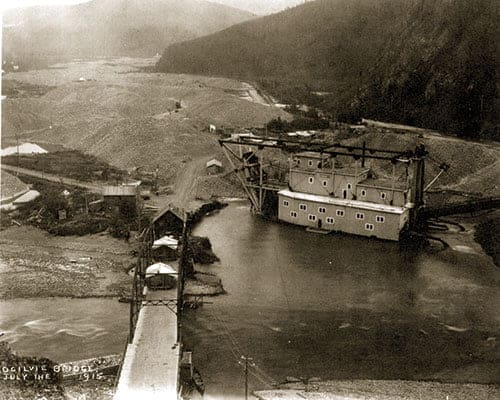
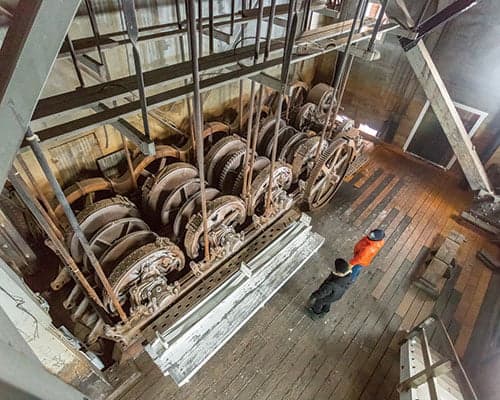
The power of using an FE model is in its adaptability. Once the model is built, refined and stresses identified, it can also be used to test how different solutions to problems will work. The model will help Parks Canada determine the best options for conserving Dredge No. 4.
“That is one of the benefits of the model. Not only can we build it to what it is now, see the final distribution of forces, areas of stress, areas of possible concern. But we can manipulate the model afterwards to see how interventions can affect it.”
Before the advent of FE modelling, all the computations would have been done by hand, an extremely time-consuming exercise for a large, complex structure like Dredge No. 4.
“It’s freaking huge!” Kung laughs. “With FE modelling, we can provide a solution much quicker than was previously possible.”
Conserving wooden boats is part art, part science, and finding experts in the field, particularly for dredges, is difficult. As Parks Canada faces this challenge for the wooden vessels in its care, FE modeling is a promising tool in the conservation toolbox.
Dredges Kept the Klondike Alive




